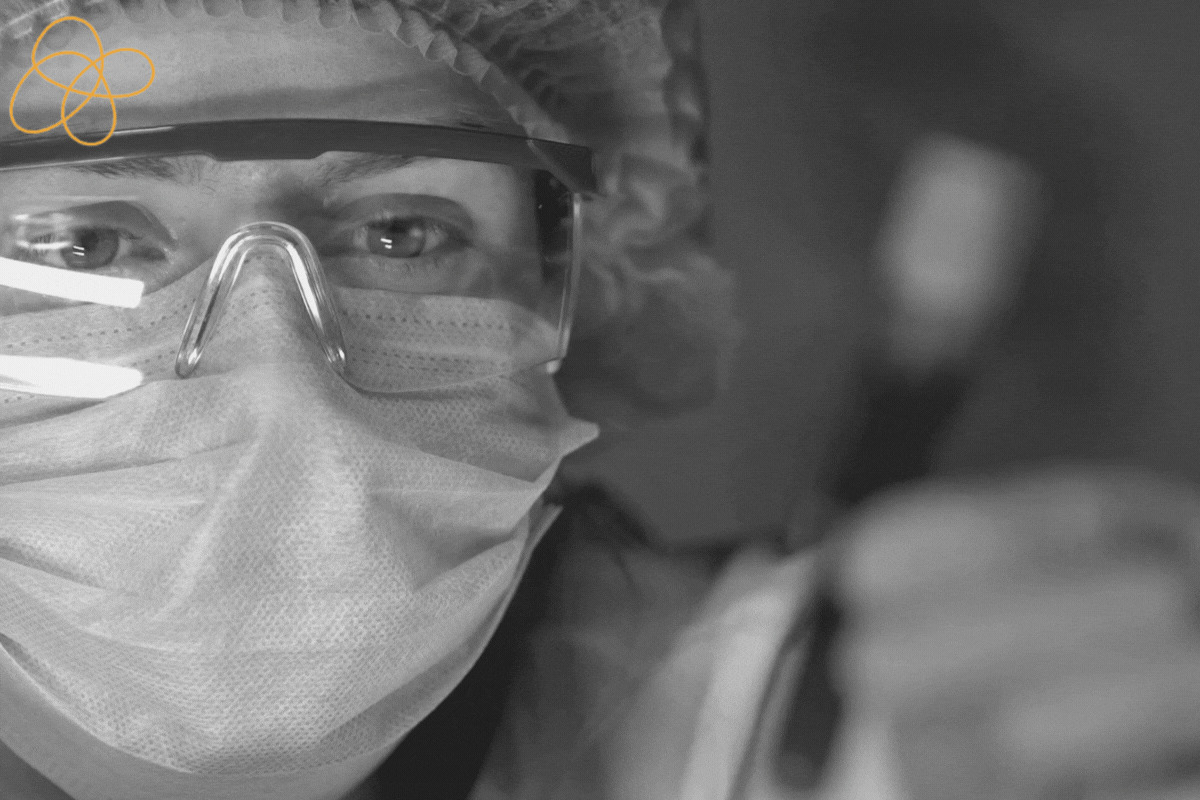Harnessing Analytical Tools for Novel Drug Modalities: Unraveling the Potentials of Gene and Cell Therapies Characterization
In the ever-evolving landscape of medicine, novel drug modalities like gene and cell therapies have emerged as game-changers in healthcare. These innovative treatments offer unprecedented opportunities to address previously untreatable diseases, opening new doors for patients and healthcare providers. However, developing and successfully deploying these therapies require robust analytical tools for characterization, ensuring safety, efficacy, and regulatory compliance. In this article, we will delve into the world of analytical tools for gene and cell therapies, exploring practical examples and highlighting the role of regulatory compliance.
Harnessing Analytical Tools for Novel Drug Modalities: Unraveling the Potentials of Gene and Cell Therapies Characterization
In the swiftly evolving drug development landscape, novel modalities such as gene and cell therapies are shifting the paradigm. While these revolutionary therapeutic strategies offer new possibilities for treating diseases, they also pose unprecedented challenges in their characterization, requiring a new generation of robust analytical tools.
A New Dawn: Gene and Cell Therapies
Gene and cell therapies stand at the precipice of a new dawn in the therapeutic landscape. In a world where diseases such as cancer, genetic disorders, and degenerative diseases continue to wreak havoc, these therapies hold the promise of transformative, potentially curative treatments. The FDA has projected that by 2025, they will be approving 10 to 20 cell and gene therapy products a year, reflecting the magnitude of this biotechnological revolution.
The Complexity of Characterization
However, the journey toward successful gene and cell therapy products is marked by the intricate characterization challenge. These therapies are not mere chemical compounds but intricate biological systems with their own nuances. Understanding their molecular identity, potency, purity, and safety profiles is not as straightforward as it is with small molecule drugs.
The Necessity for Novel Analytical Tools
As a result, the pharmaceutical industry must tap into the potential of novel analytical tools. Advanced technologies such as next-generation sequencing (NGS), flow cytometry, and mass spectrometry are becoming indispensable for the in-depth analysis of these complex products.
Next-generation sequencing, for instance, has proved instrumental in verifying vector integration sites in gene therapies, ensuring that the therapeutic gene has been inserted in the correct genomic location without disrupting other genes.
Flow cytometry, however, is pivotal for characterizing cell populations in cell therapies. By providing information on cell size, granularity, and the presence of specific surface markers, it helps determine the therapeutic cells’ purity and identity.
Meanwhile, mass spectrometry, a stalwart in the field of biopharmaceutical analysis, provides a detailed understanding of the proteins involved in these therapies, revealing information on their structure, post-translational modifications, and interactions.
Analytical Tools for Characterizing Gene Therapies:
Gene therapies involve introducing genetic material into a patient’s cells to correct or modulate specific genetic abnormalities. To ensure the success and safety of gene therapies, various analytical tools are employed throughout the development and manufacturing process:
Molecular Characterization
Techniques like polymerase chain reaction (PCR), DNA sequencing, and quantitative PCR enable researchers to precisely analyze and validate the genetic material used in gene therapies. These tools help confirm, ensuring the desired therapeutic effect.
Practical Examples:
- Polymerase Chain Reaction (PCR): In gene therapies, PCR can amplify specific regions of DNA, allowing researchers to confirm the presence and integrity of the therapeutic genes. For example, PCR can be employed to amplify and analyze the inserted gene responsible for producing a therapeutic protein, ensuring that it has been successfully integrated into the target cells.
- DNA Sequencing: DNA sequencing techniques, such as Sanger sequencing or next-generation sequencing (NGS), can be utilized to validate the accuracy of gene insertion in gene therapies. By sequencing the genetic material, researchers can verify that the therapeutic gene is correctly inserted and confirm its sequence integrity.
- Quantitative PCR (qPCR): qPCR enables researchers to measure the amount of specific genetic material, such as therapeutic genes or viral vectors, in a sample. This technique can be used to quantify the presence of therapeutic genes in gene therapy products, ensuring the desired therapeutic effect and dosage accuracy.
Vector Titer Determination
Viral vectors, such as lentiviruses or adeno-associated viruses, are commonly used to deliver therapeutic genes. Analytical tools, including quantitative polymerase chain reaction (qPCR) and viral genome sequencing, help determine viral vectors’ titer (concentration) and purity. Accurate titer determination ensures the correct dosage is administered to patients, optimizing treatment efficacy while minimizing potential adverse effects.
Practical Examples:
- Quantitative Polymerase Chain Reaction (qPCR): qPCR can be employed to determine the titer or concentration of viral vectors used in gene therapies. By targeting specific viral genetic sequences, qPCR allows for the quantification of viral particles, helping ensure the appropriate dosage of viral vectors is administered to patients.
- Viral Genome Sequencing: Viral genome sequencing comprehensively analyzes the viral vector used in gene therapies. It helps identify potential contaminants, confirm vector purity, and assess any genetic modifications or variations that might impact the therapeutic efficacy. By sequencing the viral genome, researchers can ensure the vector used is of high quality and free from harmful impurities.
Expression Profiling
Evaluating gene expression is crucial to assessing therapeutic genes’ functionality and activity. Techniques like reverse transcription-quantitative PCR (RT-qPCR) and next-generation sequencing (NGS) aid in determining the levels of transgene expression and the impact on host cells. These analyses ensure that the therapeutic genes are appropriately producing the desired therapeutic proteins.
Practical Examples:
- Reverse Transcription-Quantitative PCR (RT-qPCR): RT-qPCR enables the quantification of gene expression levels in gene therapy products. Researchers can measure the levels of transgene expression to ensure that the therapeutic genes are producing the desired proteins at appropriate levels. This analysis helps determine the functional activity and effectiveness of the therapy.
- Next-Generation Sequencing (NGS): NGS technologies allow for comprehensive gene expression profiling by analyzing the entire transcriptome. By sequencing the RNA molecules present in the cells or tissues treated with gene therapies, researchers can gain insights into the global gene expression patterns and identify any potential off-target effects or unintended consequences of the therapy. NGS helps ensure that the therapeutic genes the host cells.
These practical examples demonstrate how molecular characterization, vector titer determination, and expression profiling can be utilized to analyze and validate gene therapies. By employing these analytical tools, researchers can ensure the accuracy, safety, and efficacy of novel gene therapies, paving the way for the development of innovative treatments for various diseases.
Analytical Tools for Characterizing Cell Therapies:
Cell therapies involve using living cells, either from the patient or a donor, to treat diseases. Characterizing cell therapies involves assessing the identity, potency, purity, and safety of the administered cells:
Flow Cytometry
Flow cytometry is a powerful tool for characterizing cell therapies, allowing the analysis of cellular markers, viability, and differentiation potential. This technique provides insights into the purity and identity of the administered cells, ensuring that the correct cell population is used for treatment.
Practical Examples:
- Cellular Marker Analysis: Flow cytometry can be used to analyze specific cellular markers expressed on the surface of cells used in cell therapies. For example, in immunotherapy, flow cytometry can identify and quantify the expression of immune cell markers, such as CD3, CD4, CD8, or CD19, to ensure the purity and identity of the administered cell population. This analysis helps confirm that the correct cell population is used, minimizing the risk of unintended effects.
- Viability Assessment: Flow cytometry allows the assessment of cell viability by using viability dyes or markers, such as propidium iodide or annexin V, which differentiate between live, apoptotic, and dead cells. Evaluating cell viability is crucial for ensuring the quality and functional state of the cell therapy product, as it indicates the proportion of viable cells available for therapeutic effect.
- Differentiation Potential Analysis: Flow cytometry can help assess the differentiation potential of stem cells or other cell types used in therapies. By analyzing specific differentiation markers, researchers can determine the lineage commitment or multipotency of the cells. This analysis ensures that the cells possess the desired therapeutic capabilities and can differentiate into the appropriate cell types in the target tissue.
Cell Potency Assays
Determining the potency of cell therapies is critical for assessing their therapeutic effectiveness. Various assays, such as cell proliferation, cytokine secretion, and functional assays, provide insights into the cells’ capacity to carry out their intended therapeutic function. These assays help optimize cell therapy protocols and predict patient outcomes.
- Cell Proliferation Assay: Cell proliferation assays measure the ability of cells to replicate and expand in culture. They provide insights into the growth potential and capacity of cell therapies to generate a sufficient number of cells for effective treatment. Techniques like the 3-(4,5-dimethylthiazol-2-yl)-2,5-diphenyltetrazolium bromide (MTT) assay or the bromodeoxyuridine (BrdU) incorporation assay can be employed to quantify cell proliferation.
- Cytokine Secretion Assay: Cell therapies, particularly immune-based therapies, often rely on the secretion of cytokines or other immune factors for their therapeutic effects. Analytical tools like enzyme-linked immunosorbent assays (ELISA) or multiplex immunoassays enable the quantification of cytokine secretion by the administered cells. These assays provide valuable information about the functionality and potency of the cell therapy product.
- Functional Assays: Functional assays assess the ability of cell therapies to carry out their intended therapeutic function. For example, in cardiac cell therapies, functional assays can measure the contractile properties of cardiomyocytes derived from stem cells or other sources. By evaluating functional parameters, such as calcium handling or force generation, these assays help predict the therapeutic potential of the cells and optimize treatment protocols.
Safety Testing
Analytical tools play a crucial role in assessing the safety of cell therapies. Techniques like karyotyping, microbial testing, and endotoxin assays help identify genetic abnormalities, detect potential contamination, and ensure the absence of harmful agents. Rigorous safety testing is essential to minimize the risk of adverse events and ensure patient safety.
Practical Examples
- Karyotyping: Karyotyping involves analyzing the chromosomes of cells to detect any genetic abnormalities or chromosomal rearrangements. It is crucial for assessing the genomic stability of cells used in therapies. Karyotyping can identify chromosomal aberrations that may affect the safety or effectiveness of the cell therapy product.
- Microbial Testing: Microbial testing ensures the absence of bacterial, viral, or fungal contamination in cell therapy products. Analytical tools, such as polymerase chain reaction (PCR) or microbial cultures, can be employed to detect the presence of microorganisms and assess the product’s sterility. Rigorous microbial testing is essential for preventing potential infections or adverse reactions in patients.
- Endotoxin Assays: Endotoxins are toxic substances present in the cell walls of certain bacteria. Endotoxin assays, such as the Limulus amebocyte lysate (LAL) assay, are used to detect and quantify endotoxin levels in cell therapy products. Ensuring low or acceptable levels of endotoxins is critical to prevent adverse immune reactions or pyrogenic responses in patients.
By implementing these practical examples, researchers and manufacturers can effectively characterize cell therapies, assess their potency and safety, and ensure compliance with regulatory standards. These analytical tools and safety testing methods contribute to the development of safe and efficacious cell therapies, benefiting patients and advancing the field of regenerative medicine.
Regulatory Compliance in Gene and Cell Therapies:
Regulatory bodies play a crucial role in ensuring gene and cell therapies’ quality, safety, and efficacy. Analytical tools are instrumental in meeting regulatory requirements.
Good Manufacturing Practices (GMP)
GMP guidelines outline the quality standards for the manufacturing and control of pharmaceutical products. Analytical tools are used throughout the manufacturing process to demonstrate consistency, identity, and purity of gene and cell therapies, thereby ensuring compliance with GMP regulations.
Practical Examples:
- Analytical Tools for Batch Release Testing: Analytical tools such as high-performance liquid chromatography (HPLC), mass spectrometry (MS), and spectrophotometry are used during the manufacturing process to test the identity, purity, and potency of gene and cell therapy products. These tools help ensure that each batch of therapy meets the required quality standards before it is released for clinical use. For example, HPLC can be employed to analyze the purity and impurity profiles of therapeutic proteins produced through gene therapies, ensuring that they meet the defined specifications for clinical use.
- Environmental Monitoring: GMP guidelines also emphasize the importance of monitoring the manufacturing environment for contaminants. Analytical tools, such as microbial testing methods (e.g., agar plate cultures, polymerase chain reaction), are used to assess the presence of microorganisms and ensure the cleanliness of the production facilities. Regular monitoring and analysis of the manufacturing environment help maintain a controlled and sterile production environment.
Pharmacopeial Standards
Pharmacopeial standards, such as the United States Pharmacopeia (USP) and the European Pharmacopoeia (Ph. Eur.), provide guidance on analytical methods and specifications for gene and cell therapies. These standards help establish a common framework for analytical testing, ensuring consistency and comparability between different products.
Practical Examples:
- Analytical Method Validation: Pharmacopeial standards provide guidance on the validation of analytical methods used in the characterization of gene and cell therapies. For instance, the United States Pharmacopeia (USP) and the European Pharmacopoeia (Ph. Eur.) provide detailed procedures for method validation, including accuracy, precision, specificity, and robustness. Compliance with these standards ensures that the analytical methods used to assess the quality attributes of therapies are reliable, reproducible, and meet the required regulatory criteria.
- Specifications for Analytical Testing: Pharmacopeial standards also define the specifications for analytical testing of gene and cell therapies. These specifications outline the acceptable ranges or limits for various quality attributes such as identity, purity, potency, safety, and stability. By adhering to these standards, manufacturers can ensure consistency in analytical testing practices and establish a common framework for assessing the quality of gene and cell therapies across different products.
Regulatory Submissions:
Analytical data generated using appropriate tools form a vital component of regulatory submissions for gene and cell therapies. Robust analytical characterization, including data on identity, potency, safety, and stability, is crucial for obtaining regulatory approvals and demonstrating the safety and efficacy of these therapies.
Practical Examples
- Identity Confirmation: Analytical data generated through techniques like DNA sequencing, fingerprinting, or peptide mapping plays a crucial role in confirming the identity of the gene or cell therapy product. This data demonstrates that the product matches the intended composition and verifies its authenticity.
- Potency and Efficacy Assessment: Analytical tools are used to assess the potency and efficacy of gene and cell therapies. For example, bioassays or functional assays can be employed to evaluate the therapeutic activity of the product. These assays provide quantitative data on the therapeutic effect, helping establish the product’s potency and its ability to deliver the desired therapeutic outcome.
- Safety and Stability Evaluation: Analytical characterization of gene and cell therapies includes safety assessments, such as testing for potential contaminants, impurities, or harmful substances. Stability testing is also conducted to determine the product’s shelf life and ensure it maintains its quality over time. Analytical tools, including various chromatographic techniques, spectroscopy, and molecular biology assays, are used to gather data on safety and stability parameters, which are essential for regulatory submissions.
By employing these practical examples, manufacturers and researchers can ensure compliance with GMP guidelines, adhere to pharmacopeial standards, and provide robust analytical data for regulatory submissions. These practices are vital for the successful development, manufacturing, and regulatory approval of gene and cell therapies, ensuring their quality, safety, and efficacy.
Conclusion - Embracing the Future
The dawn of gene and cell therapies marks a seismic shift in the therapeutic landscape. However, the road to unlocking their full potential is paved with challenges. As we continue to unravel their intricacies, the need for advanced analytical tools and robust regulatory compliance becomes increasingly evident.
In this dynamic landscape, those who can skillfully navigate the nexus of characterization, analytical innovation, and regulatory compliance will be at the vanguard of this biotechnological revolution. The future of medicine beckons, and it is our collective responsibility to respond with rigor, creativity, and an unyielding commitment to patient safety.
Analytical tools are indispensable for the successful development, manufacturing, and regulatory compliance of gene and cell therapies. These tools enable researchers and manufacturers to characterize the genetic material, vectors, and cells used in therapies, ensuring safety, efficacy, and reproducibility. Regulatory compliance is intricately linked to the use of analytical tools, as they help meet the stringent quality standards and provide the necessary data for regulatory submissions. As the field of gene and cell therapies continues to evolve, ongoing advancements in analytical tools will undoubtedly drive further innovation and expand the potential of these transformative treatment modalities.
Note: It’s important to consult up-to-date regulatory guidelines and specific methodologies when implementing analytical tools for gene and cell therapies, as regulations and best practices may vary over time and across regions.






